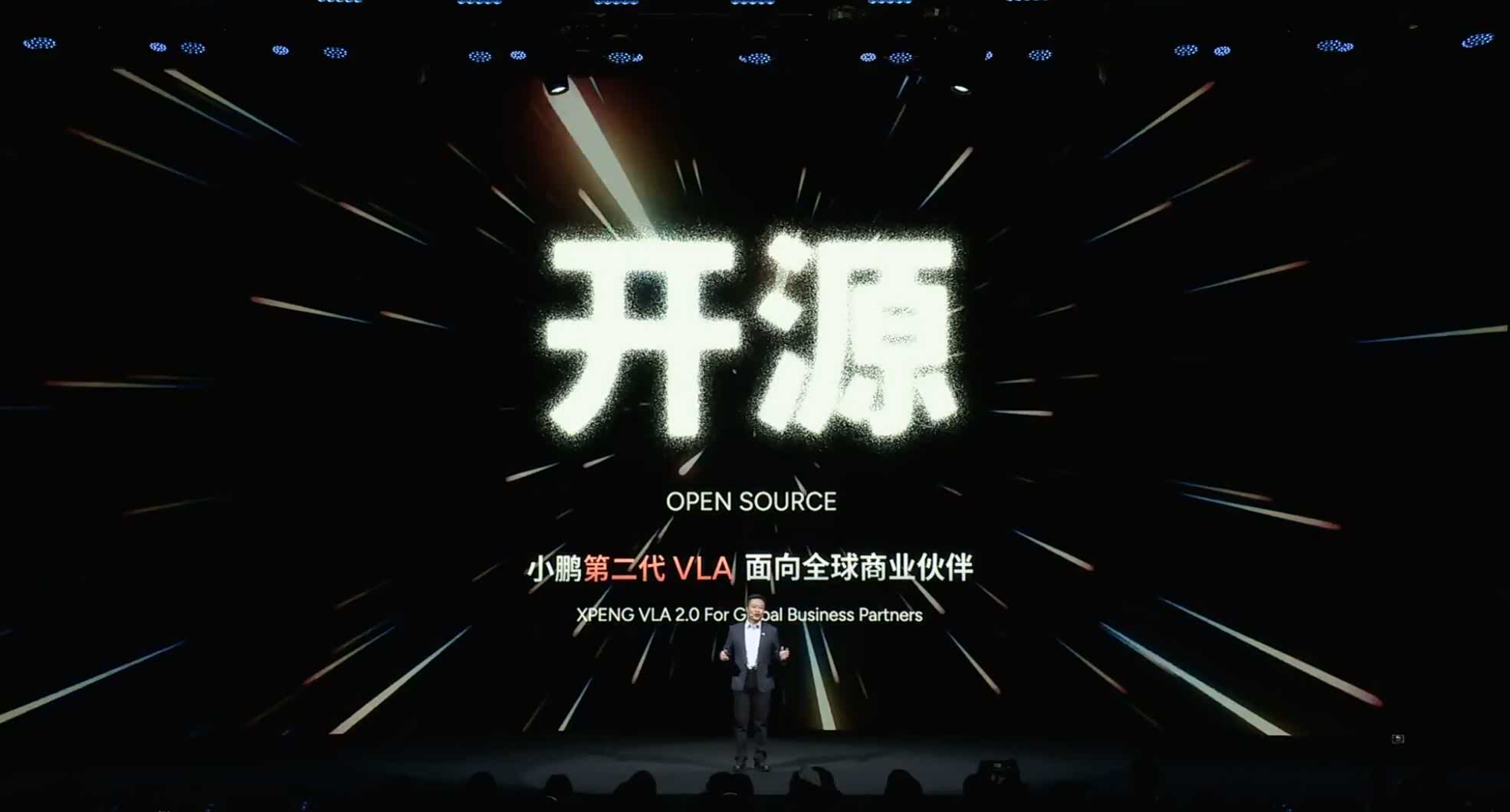VLA 2.0 Open-Source Strategy

What Was Announced
- VLA 2.0: 720-billion-parameter Vision-Language-Action model for physical AI.
- Open-sourced globally for commercial partners (not fully public).
- First partner: Volkswagen (VW) – integrates VLA 2.0 + Turing AI chips.
- Timeline:
- Q1 2026: VLA 2.0 in XPeng Ultra vehicles
- 2026: Mass production of 3 robotaxi models, IRON humanoid robot, flying cars
- Q1 2026: VLA 2.0 in XPeng Ultra vehicles
Why Open-Source?
- Ecosystem Leadership – Positions XPeng as the “Android of physical AI”
- Data Flywheel – Wider deployment → more real-world data → faster model updates (every 5 days)
- Revenue Diversification – Shift from vehicle sales to AI licensing, chips, services
- Industry Acceleration – Partners avoid reinventing 720B-parameter models
- Brand & Talent Magnet – Showcases tech superiority (e.g., 13× narrow-road performance)
What is Likely to be Open-Sourced
Controlled access via commercial licenses — not GitHub-style open release
- VLA 2.0 model architecture & weights
- High-level EEA frameworks
- APIs for action generation, gesture recognition
- Simulation tools & testing guidelines
- Turing chip compatibility specs
What is Unlikely to be Open-Sourced
- Fine-tuned datasets (65,000 years of driving)
- Real-time OTA update pipelines
- Chip designs / silicon IP
- Low-level hardware-software interfaces
- Self-evolving training algorithms
Positioning
XPeng can become the AI infrastructure layer for mobility OEMs, where they provide integration, fine-tuning, validation, hardware supply and regulatory/consultative support.
Help partners lower barrier for ADAS.
- Avoid high R&D and talent cost
- Avoid need for data collection
- Avoid high compute for training
- Reduce Time-to-Market
- Speed up regulatory approval
Licensing and Revenue Streams
| Category | Offering | Monetization Model |
|---|---|---|
| AI Software | VLA 2.0 + VLM (in-cabin) | Per-vehicle royalty / subscription |
| Hardware | Turing AI chips | Unit sales + integration fees |
| Full Stack | ADAS + EEA + chips | Turnkey solution packages |
| Data & Services | Anonymized datasets, simulation, regulatory support | Consulting / data licensing |
| Ecosystem | APIs, developer tools | Usage-based pricing |
Example: VW pays for VLA + chips + co-tuning for ID. series
Could result in an NVidia CUDA-like technology stack lock-in.
Risks & Mitigations
| Risk | Mitigation |
|---|---|
| Competitors fork VLA | License restricts full replication; performance tied to Turing chips |
| Lost exclusivity | Revenue shifts to volume licensing + services |
| IP leakage | Open-source only architecture, not data or training loops |
Summary
XPeng is not giving away its crown jewel — it’s building an empire.
- Short-term: Accelerate robotaxi rollout, secure VW/Hyundai deals
- Long-term: Become the de facto AI platform for all physical intelligence
VLA 2.0 open-sourcing = Tesla opening patents in 2014, but with chips and licensing attached.
Goal: Dominate the $10T+ physical AI economy by 2035.